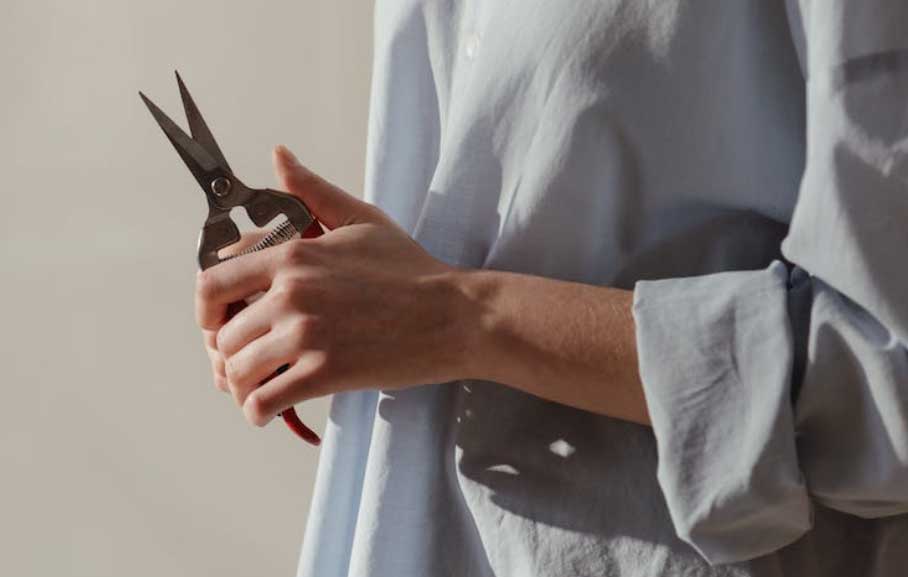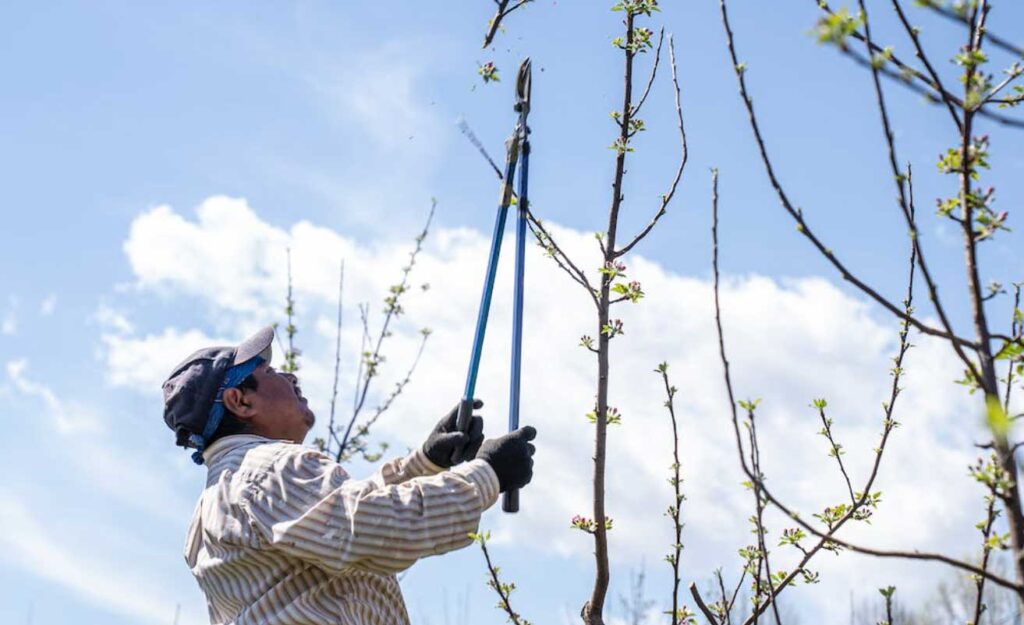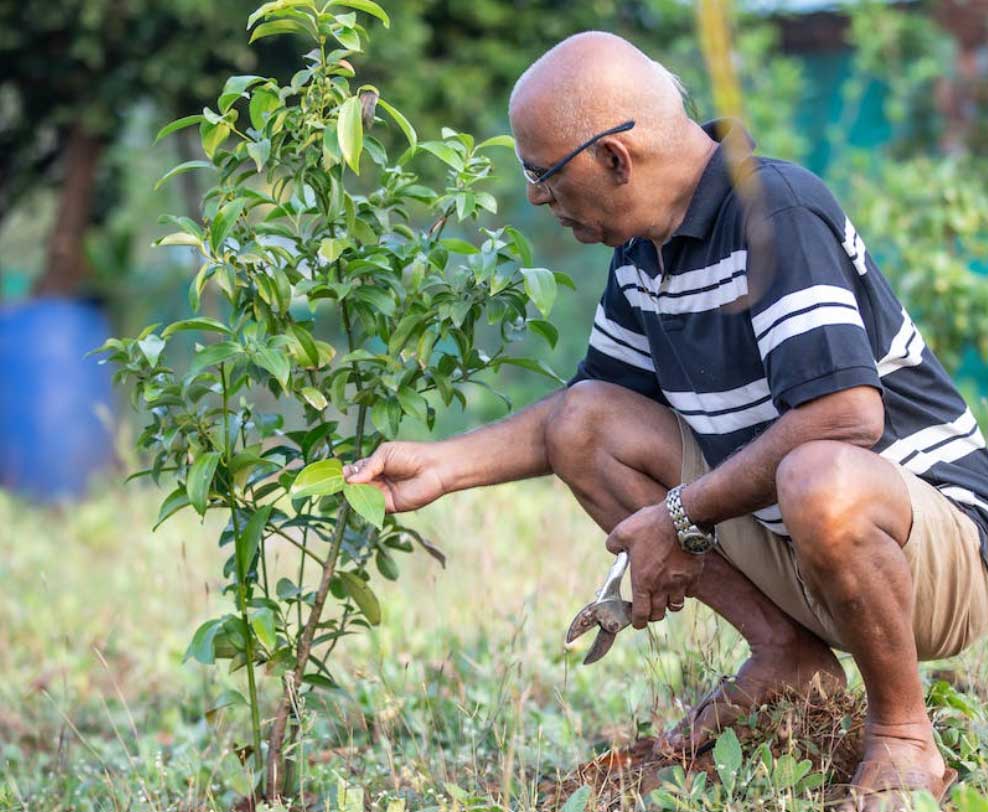Pruning and trimming your plants can be a daunting task, especially if you’re not sure where to start. But with the right tools and know-how, it doesn’t have to be!
This essential guide will provide helpful tips on how to prune and trim your plants properly so that they remain healthy and look great. You’ll learn when and how much to prune and which tools are best suited for different types of plants.
With this knowledge, you’ll be able to keep your garden looking its best all year round!
Overview Of Pruning
Pruning and trimming plants is a great way to keep them healthy. It can also help them look their best!
Pruning involves removing parts of the plant that are dead, diseased or damaged. Trimming is when you cut back overgrown branches and stems to maintain the shape of your plant. Both pruning and trimming should be done with care, so it’s important to know what you’re doing before getting started.
It’s always a good idea to do some research on the type of plant you have before making any cuts. Different kinds of plants need different levels of pruning or trimming. Knowing what kind of pruning needs to be done will make sure that you don’t damage your plant unnecessarily.
Make sure to familiarize yourself with proper cutting techniques as well – they’ll help ensure that your plants remain in top condition after pruning or trimming.
Finally, it’s important to use clean, sharp tools when pruning or trimming your plants. Dull blades can leave jagged edges which may cause more harm than good to your plants. Clean tools will help prevent disease from spreading between plants too, so make sure they stay sanitized while working outside!
With all these tips in mind, you’ll be ready for the next step: preparing to prune!

Preparing To Prune
Getting ready to prune your plants is an important step. You need to make sure you have the right tools and know what you’re doing. Here’s a list of things to keep in mind:
- Pick the right time – Pruning during certain seasons will help promote healthy growth for your plant.
- Know which parts to trim – Different plants require different types of pruning, so it’s important that you know exactly which branches or stems need cutting off.
- Be careful with sharp objects – When using any kind of tool, be sure to take extra care not to injure yourself or damage other nearby plants.
- Wear protective clothing – Make sure you always wear gloves when handling sharp gardening tools and dress appropriately for outdoor work!
Pruning can seem intimidating at first, but if you follow these tips it won’t be too hard! It’s all about taking the proper steps and being aware of safety measures while working on your plants. To ensure success with pruning, having the right supplies is key…
Tools Needed
Now that you have prepared to prune, it’s time to gather the tools needed for the job. Pruning can be a tricky task and having the right tool for each type of cut is essential in getting the desired result.
To help make sure you pick up the correct items from your local garden store, here’s a handy table:
| Tool | Use | Description |
|---|---|---|
| Pruners | Smaller cuts | Sharp blades with handles |
| Loppers | Larger branch cuts | Longer blades |
| Hedge Shears | Shaping hedges | Rotating blade design |
| Saws | Removing large branches | Curved or straight teeth |
Cool! Now we’re ready to get down and dirty with some serious pruning action. Before we start cutting away, let’s take a look at the different types of pruning cuts out there so we know what kind of shape we want our plants in.
Types Of Pruning Cuts
There are several types of pruning cuts you can make. The first kind is a heading cut, which involves cutting off the top of the plant to encourage it to grow wider and bushier. This type of cut isn’t recommended for all plants, but it’s often used on shrubs and trees.
The second type is thinning out, where you remove some stems from below in order to let more sunlight reach inner branches. This will help keep your plants healthy because they’ll be able to get more air circulation too. Thinning out also encourages new growth so your plants look fuller and healthier overall.
Pinching back is another way to get rid of any dead or weak parts on the plant, such as leaves or stems that have been damaged by pests or diseases. Doing this occasionally helps prevent these problems from getting worse over time. Plus, it makes sure that only strong shoots remain so that your plants stay full and lush!
These different kinds of pruning cuts can help keep your plants looking their best.
Now that we’ve discussed them, let’s talk about what comes next: aftercare and maintenance!

Aftercare And Maintenance
Once your plants are all pruned and trimmed, it’s important to make sure you look after them properly. Depending on the type of plant, this can mean different things for each one. Generally though, there’s a few key steps that will help keep any kind of plant healthy and looking good.
One step is watering – knowing how much water your plants need is essential. Different types might need more or less than others so take care not to over-water, which can cause problems with root rot.
On top of this, fertilizing is also important to give extra nutrients in order for the plant to grow well.
Finally, regular inspections should be done every couple weeks to check if anything needs attention like pests or disease. If something does appear then quickly deal with it before it spreads too far throughout the whole plant.
Taking these simple steps should ensure your plants stay in great condition!
Frequently Asked Questions
How Often Should I Prune My Plants?
Have you ever wondered how often you should be pruning your plants? It can be tough to decide when the right time is.
Pruning at different times of year can have a big impact on the health and growth of your plants, so it’s important to know what you’re doing!
In this guide, we’ll discuss why pruning matters and provide tips for making sure your plants stay healthy.
So, read on to learn all about pruning and trimming your plants.
Is Pruning Necessary For All Plants?
Pruning isn’t necessary for all plants, but it’s a great way to keep your garden looking neat and healthy.
It helps them grow better by removing dead or unhealthy branches so new ones can take their place.
Plus, regular pruning encourages lush foliage and more flowers!
But before you start trimming away, make sure to do some research on the plant species first – that way you’ll know what type of pruning is best for each one.
What Are The Benefits Of Pruning My Plants?
As the saying goes, ‘a little pruning never hurt anyone’, and that rings true for your plants too!
Pruning has a lot of great benefits. It helps to keep your plants healthy by ensuring they get enough light and air circulation, while also helping them grow more evenly.
Pruning can also help you control the shape of your plants, so they look their best in your garden or on your windowsill.
So it’s definitely worth taking some time to trim up those greens!
Are There Any Risks Associated With Pruning?
Pruning your plants can be a great way to keep them healthy and looking their best, but it’s important to know that there are some risks associated with pruning.
If you don’t do it correctly, or if you trim too much of the plant away, it could die or get damaged beyond repair.
It’s always a good idea to research proper techniques for pruning before getting started.
How Do I Know When To Prune My Plants?
Pruning is an important part of keeping your plants healthy and looking their best, but knowing when to prune them can be tricky.
It’s generally a good idea to trim back dead or damaged branches any time during the year, but for more extensive pruning you should wait until late winter or early spring.
Doing this will help avoid shocking the plant with too much stress at once. Plus, it gives the plant plenty of time to recover before colder weather arrives!

Conclusion
Pruning and trimming your plants can be a daunting task, but it doesn’t have to be! With the right knowledge and tools, you can easily keep your plants healthy and looking their best.
Knowing when to prune is essential for getting the most out of your plants, as well as knowing which types of pruning are necessary for each plant. The benefits of pruning are numerous – from improving plant health to increasing yields to making them look better. But there are also risks associated with pruning, so understanding what these risks are before you start is important.
Overall, I’ve learned that taking the time to properly care for my plants through regular pruning and trimming can yield amazing results. It’s been an exciting journey learning how to take better care of my plants, and I’m sure it will only get easier with practice.
Plus, by caring for my plants in this way, they’ll stay healthier longer and look even more beautiful than before!
So don’t be afraid – just grab your clippers and scissors, do some research on proper pruning techniques, and dive into a world of lush foliage and vibrant blooms!
Pruning may seem like a chore at first glance, but once you learn all the tips and tricks involved in keeping your garden happy and healthy, you’ll come to love the process!